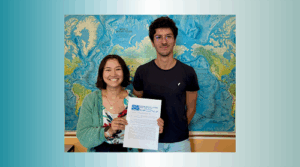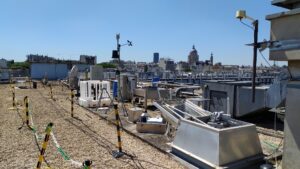Offre de thèse
Reconstruction of carbon cycle-climate interactions between 600 and 800 thousand years ago from the analysis of the air trapped in the deep ice of the EPICA Dome C Antarctic core
Contexte
Thesis project funded with the project Toward Beyond-EPICA (ToBE) by the ANR.
Description
Thesis project : Reconstruction of carbon cycle-climate interactions between 600 and 800 thousand years ago from the analysis of the air trapped in the deep ice of the EPICA Dome C Antarctic core
Many uncertainties remain on the future and past interactions between climate and the carbon cycle, as well
as their impact on the different components of the Earth system. In this context, paleoclimatology provides
useful information. The Quaternary climate (last 2.58 million years, Ma), is punctuated by warm periods called interglacials, each of them lasting between ~5,000 and ~30,000 years. These interglacials are characterized by reduced ice cover on the Northern Hemisphere continents and alternate with cold periods, called glacials, associated with large ice caps in the Northern Hemisphere. The cyclicity associated with this succession of glacial-interglacial periods changed during the Middle Pleistocene Transition (occurring between ~1.2 Ma and ~700,000 years ago) from ~41,000 to ~100,000 years. Interglacial periods provide relevant information in the context of global warming as they offer a series of natural laboratories to study the processes within the Earth system for a wide range of warm conditions.
Analyses of the ice and the air trapped in the bottom of the EPICA Dome C (EDC) Antarctic ice core could
identify several particularly-interesting interglacial periods between 600,000 and 800,000 years ago: Marine Isotope Stage 15 (MIS 15), MIS 17 and MIS 19. MIS 15 and MIS 17 stand out from the climate variations of the last 800,000 years because of the particular pattern of polar warming during these periods, while MIS 19 is the best analogue for understanding the interactions between the carbon cycle and climate change in a context of natural forcings because of its similarity in orbital configuration to the current interglacial.
Finally, these ‘old’ interglacials occur in an intriguing context where glacial-interglacial cyclicity is no longer ~41,000 years but not yet ~100,000 years. However, the study of the 800 000-600 000-year time interval remains globally limited as few Antarctic ice cores record this old period while the analysis of the deep ice in the EDC core that covers this time-interval remains challenging. Thus, we still lack a precise determination of the sequence of events between climate change, carbon cycle variations and orbital forcing during the MIS 15, MIS 17 and MIS 19 interglacial periods and the deglaciations that precede them.
In close collaboration with our colleagues at the Laboratoire des Sciences du Climat et de l’Environnement (Saclay, France), this PhD project proposes to study several climate and environmental tracers measured in
the air trapped in the last 200 m of the EDC ice core over the period 800,000-600,000 years. In particular, it will rely on new measurements of ice air content, O2/N2 ratio, and O2 isotopic composition (δ18Oatm) with the goal of producing a new dating of the EDC core over this time interval. New millennial- and sub-millennial scale measurements of atmospheric greenhouse gas concentrations (CO2 and CH4), carbon isotopes (δ13C of CO2), and impurities will provide unique sequences of events between climate variations, carbon cycle changes, and orbital forcing during these ‘old’ interglacials and the preceding deglaciations. These new data will be compared to existing millennial-scale data on more recent interglacials (MIS 5, MIS 7) to refine our understanding of interglacials in the context of the last 800 000 years.
This project consists of (1) an analytical part of data acquisition from the analysis of ice core samples with
innovative methods developed in the framework of the national analytical platform PANDA, including a new
optical spectrometer for the measurement of CO2 and δ13C of CO2, (2) an analytical part of the new records for dating purposes involving the PALEOCHRONO dating model developed at the IGE (3) an interpretation part to identify the carbon sinks and sources that modulate the CO2 concentration in the atmosphere and the changes in the carbon cycle from simple models and finally (4) a synthesis part to propose new reference climate sequences between 800 000 and 600 000 years ago.
We are looking for a student highly motivated by the study of climate and paleoclimate with a strong
background in physics and/or geosciences. This PhD project requires the ability to work as part of a team and to collaborate with teams outside IGE, in France and abroad. A good written and spoken English is required.
This project is funded through the project ToBE by the French National Research Council (ANR) and it has
some strong interaction with the European Project Beyond EPICA Oldest Ice Core.
Contacts :
Emilie Capron ;
Frédéric Parrenin ;
Compétences requises
We are looking for a student highly motivated by the study of climate and paleoclimate with a strong
background in physics and/or geosciences. This PhD project requires the ability to work as part of a team and to collaborate with teams outside IGE, in France and abroad. A good written and spoken English is required.






